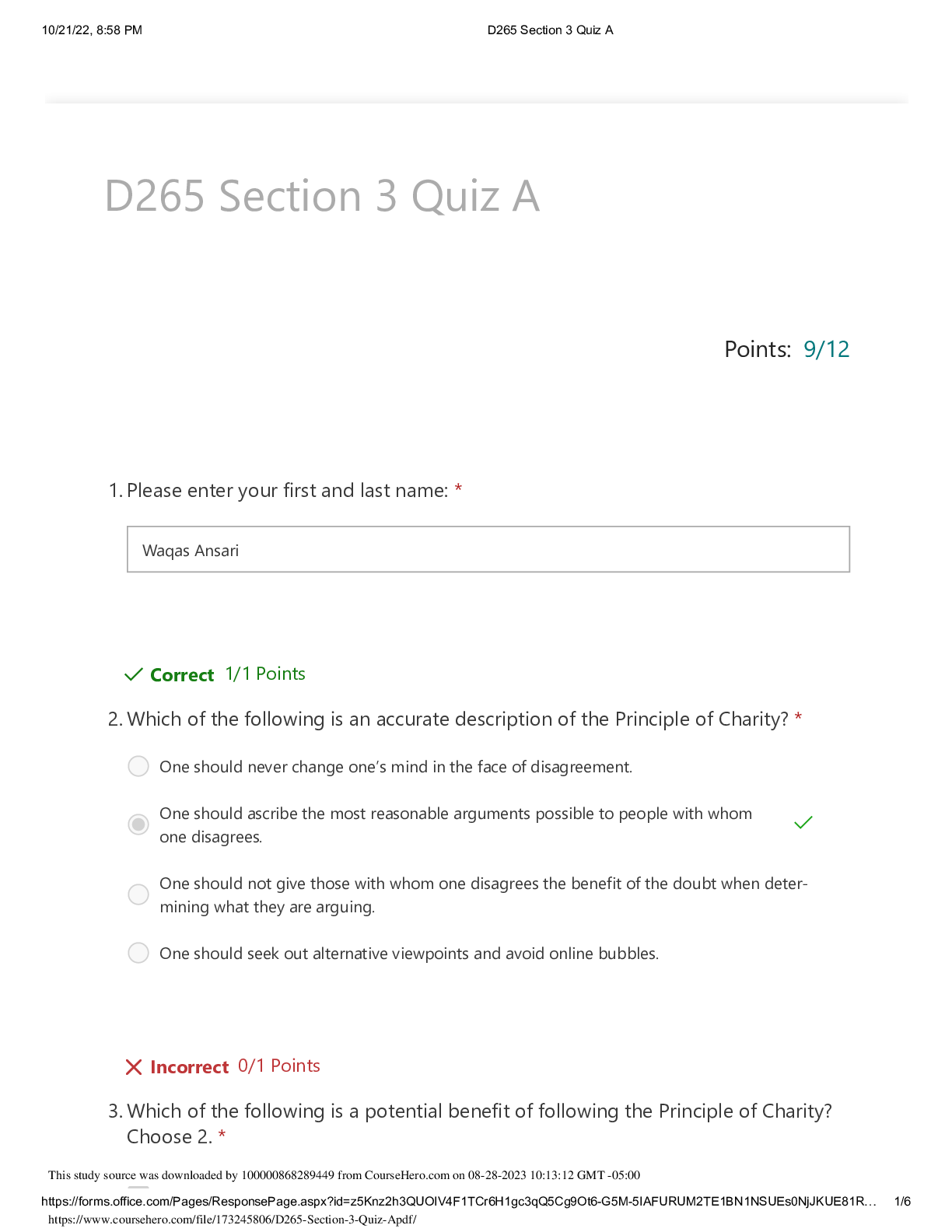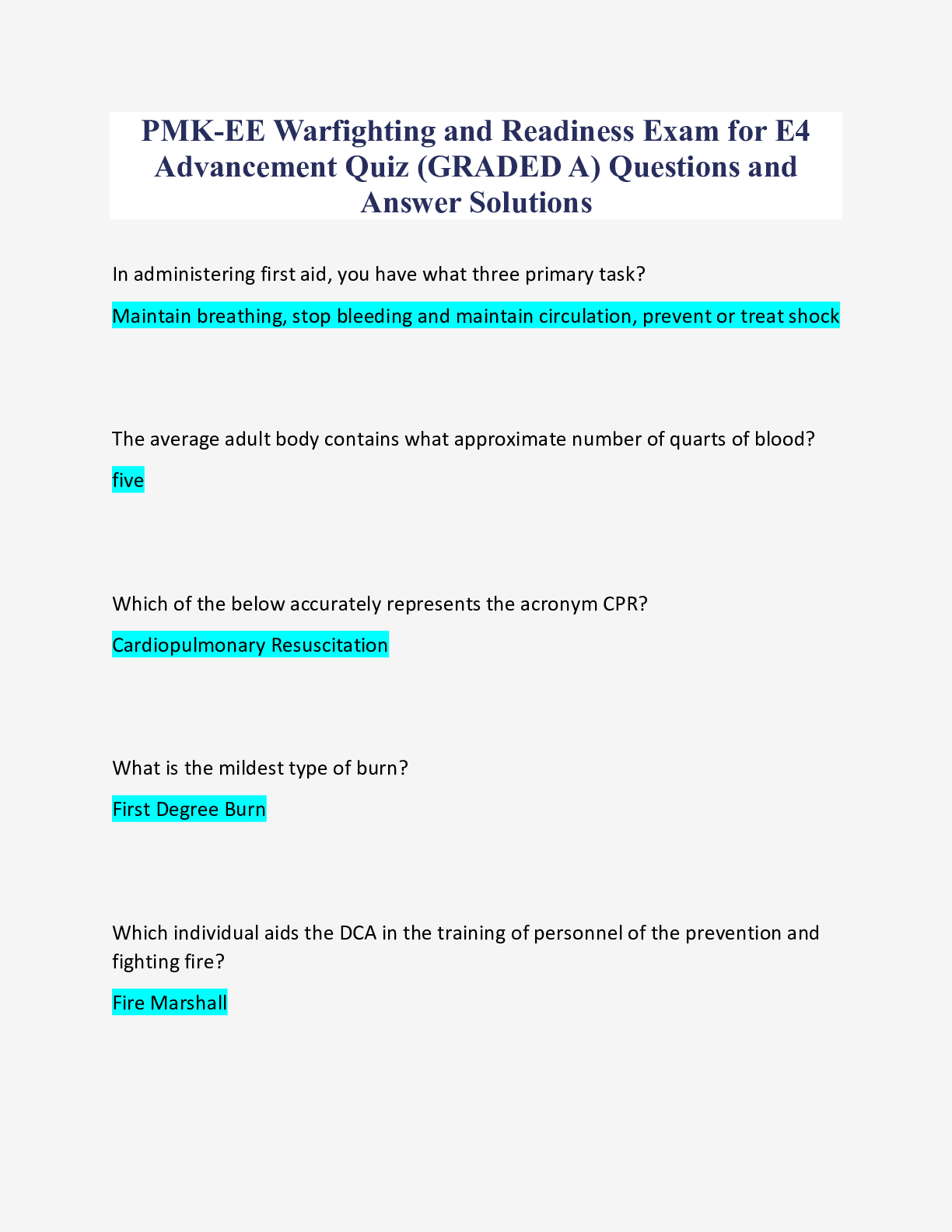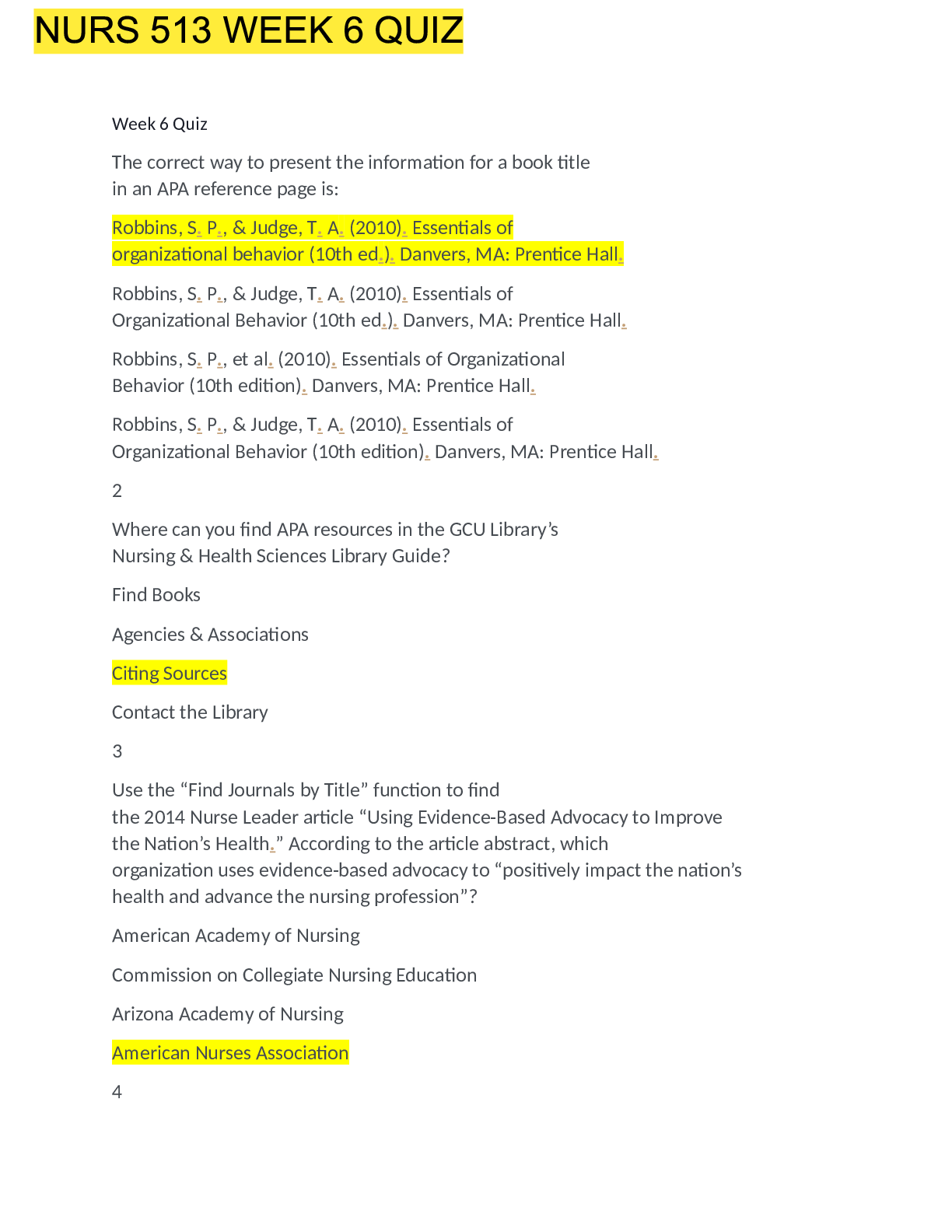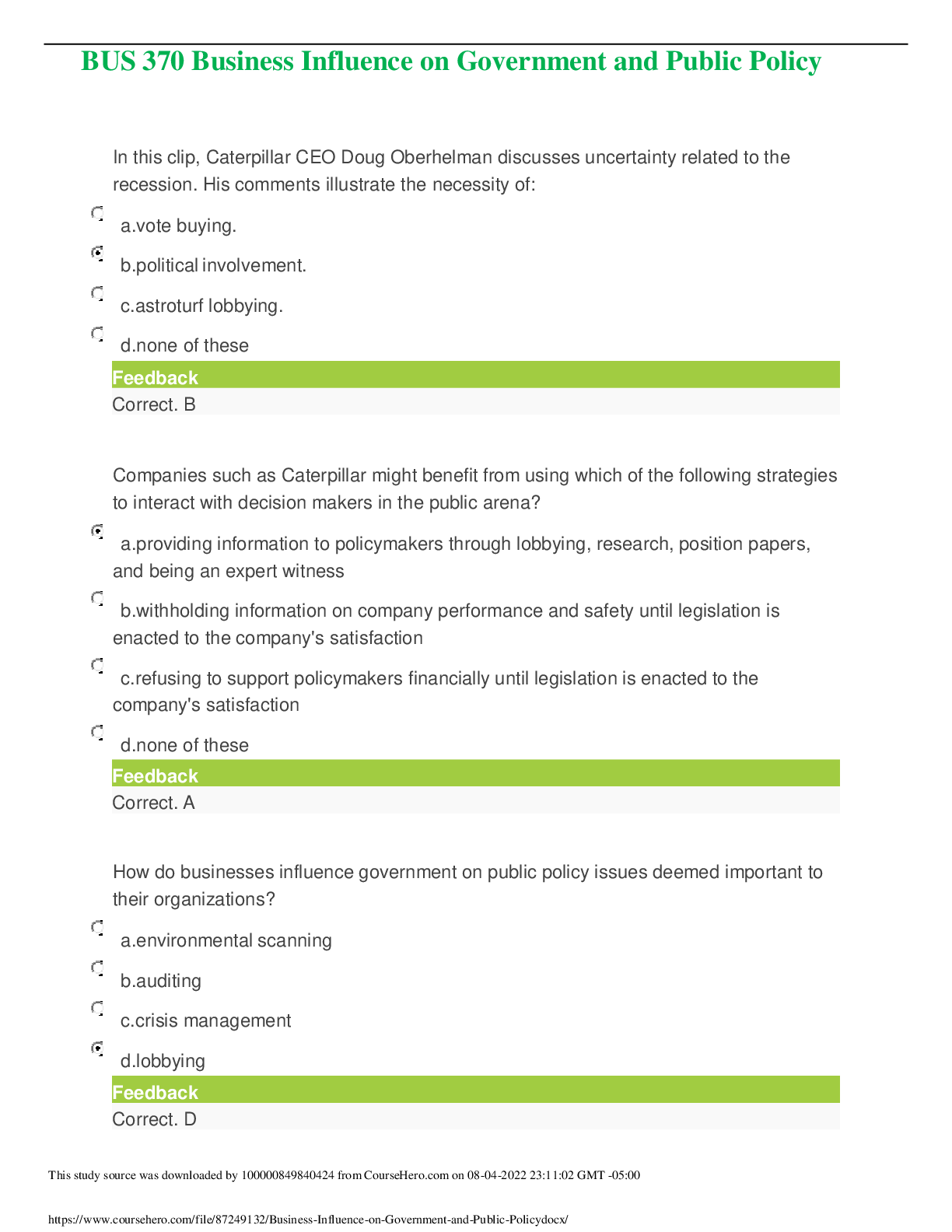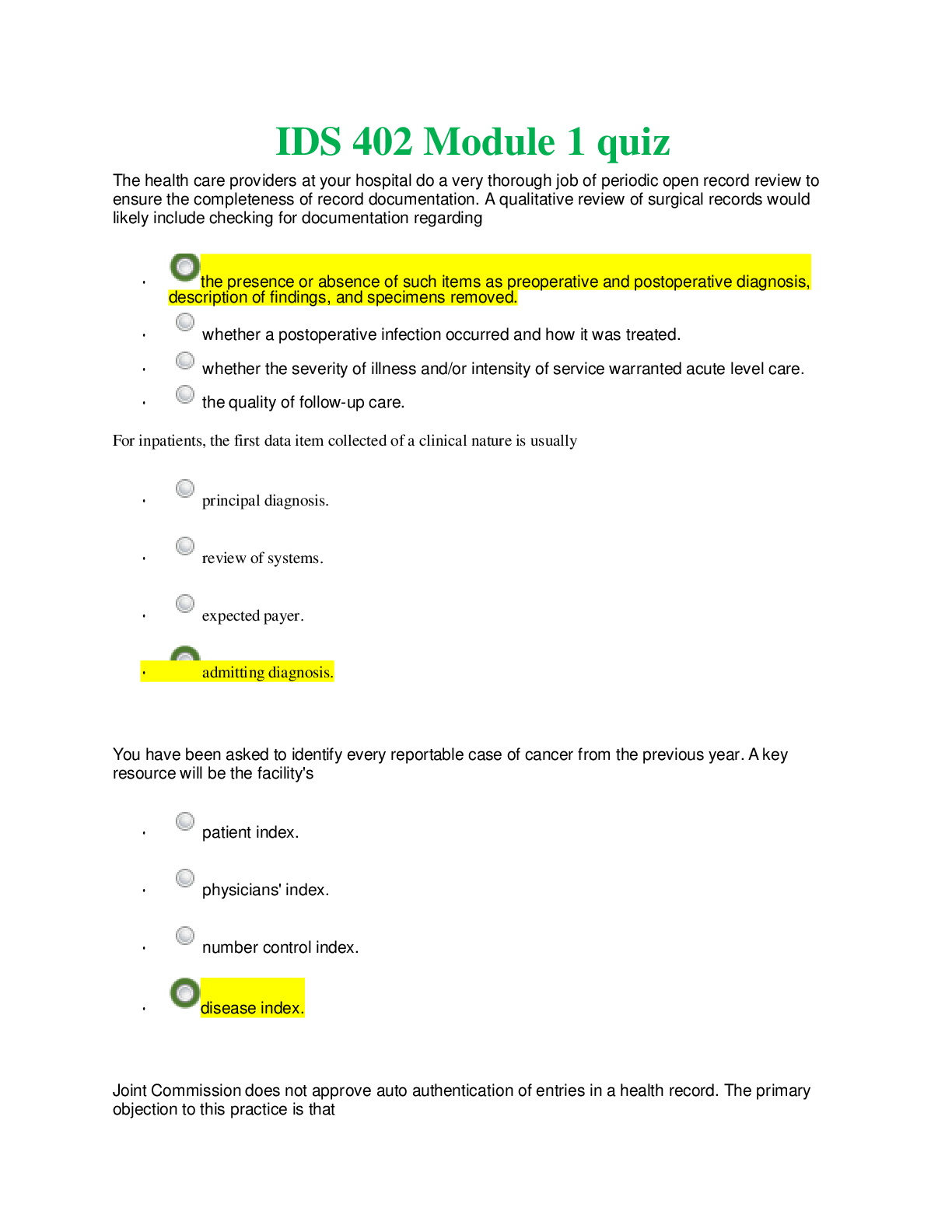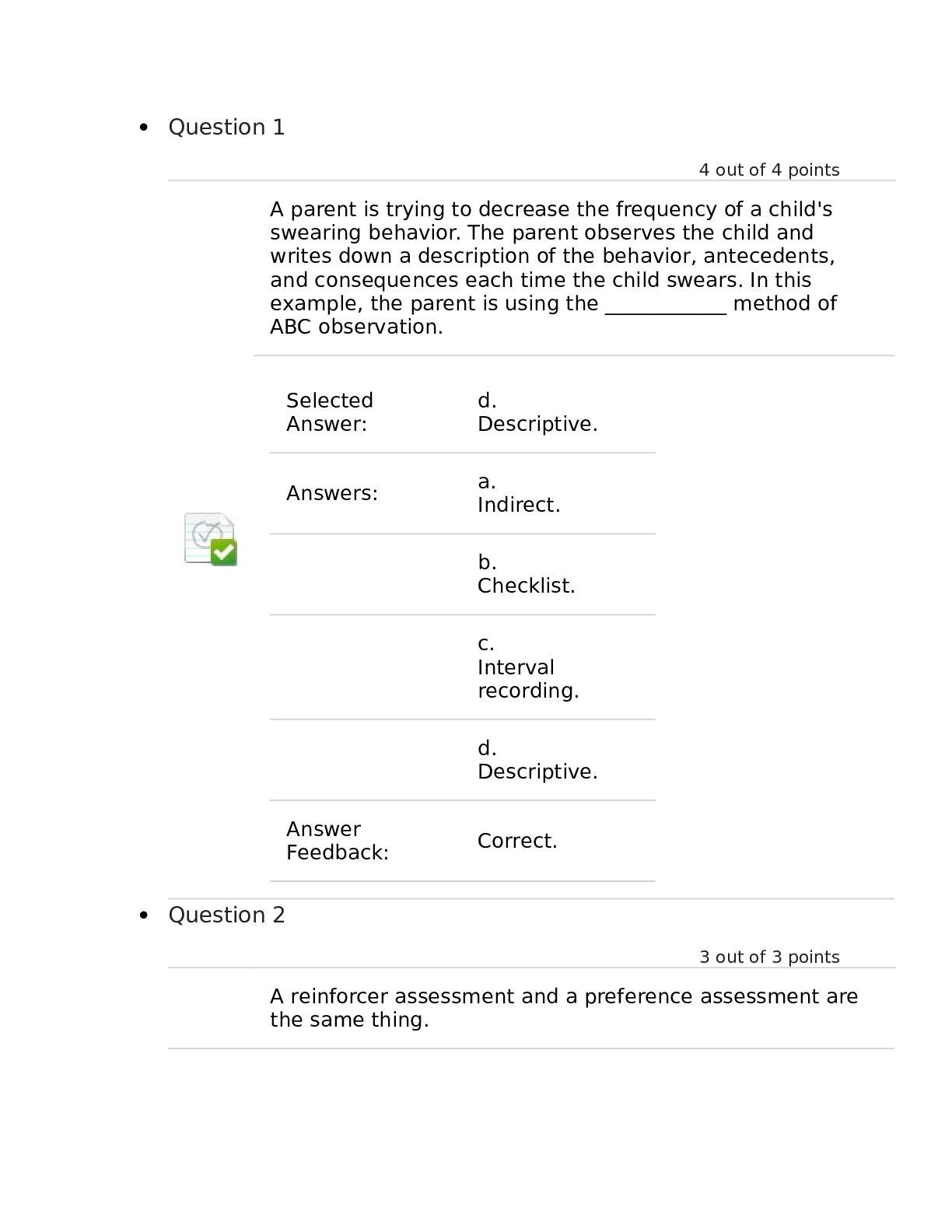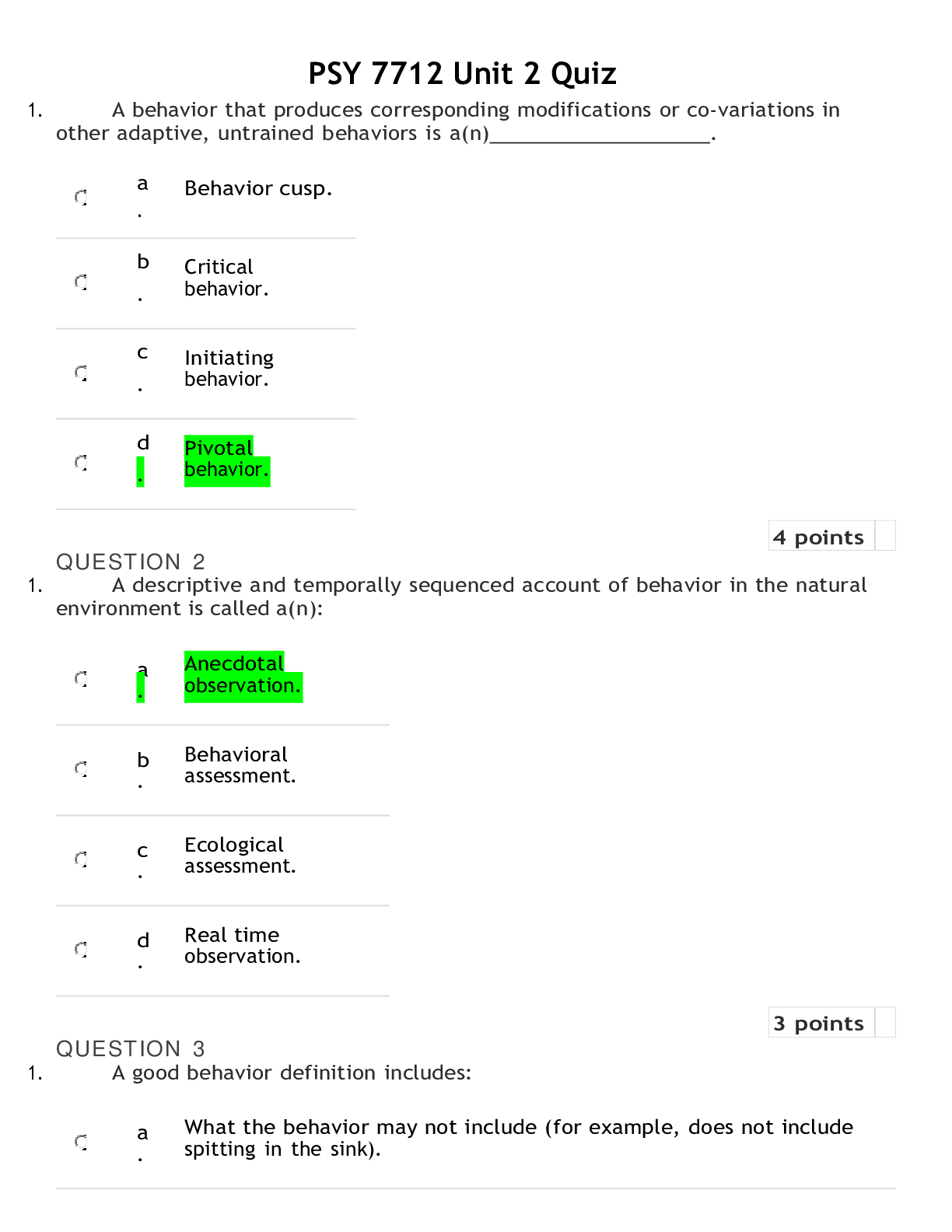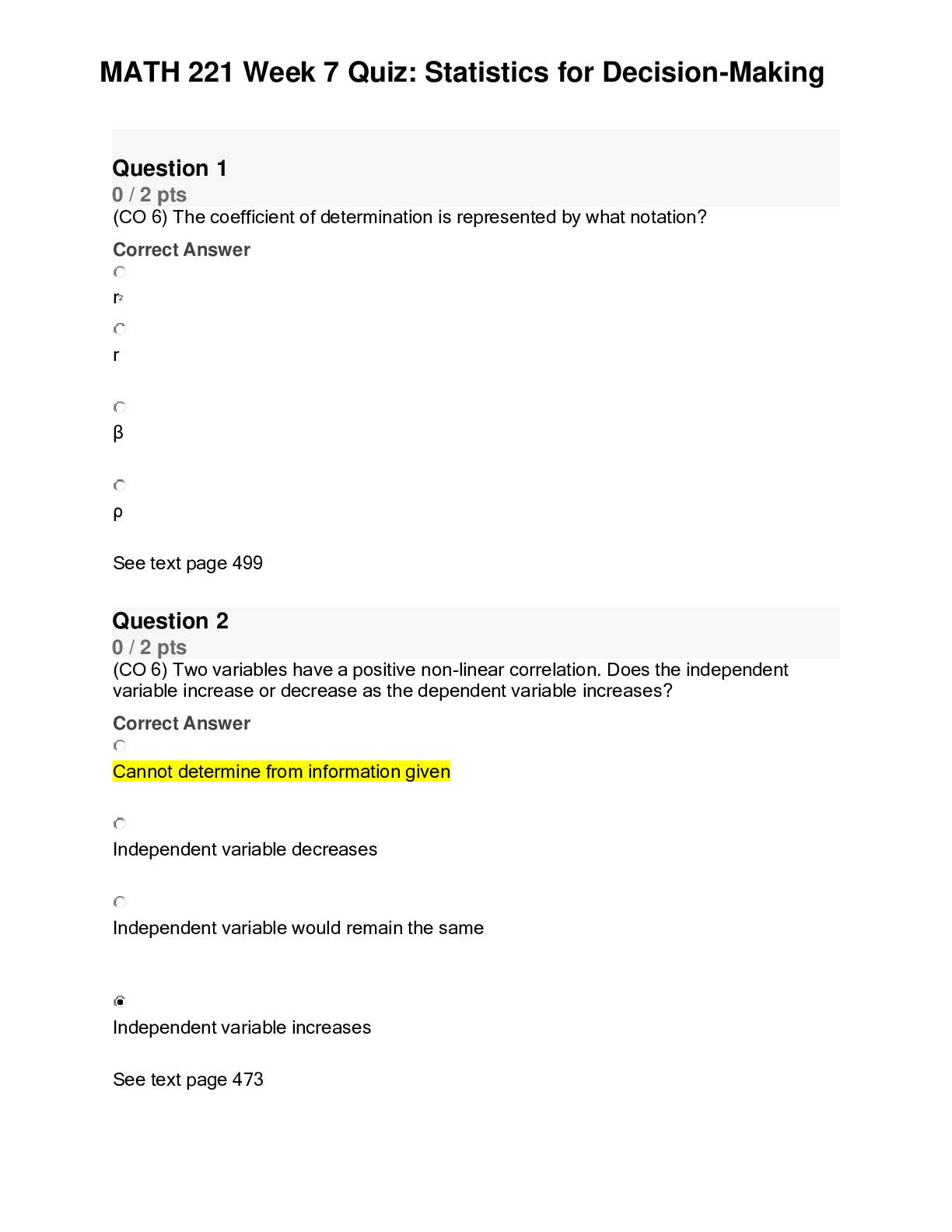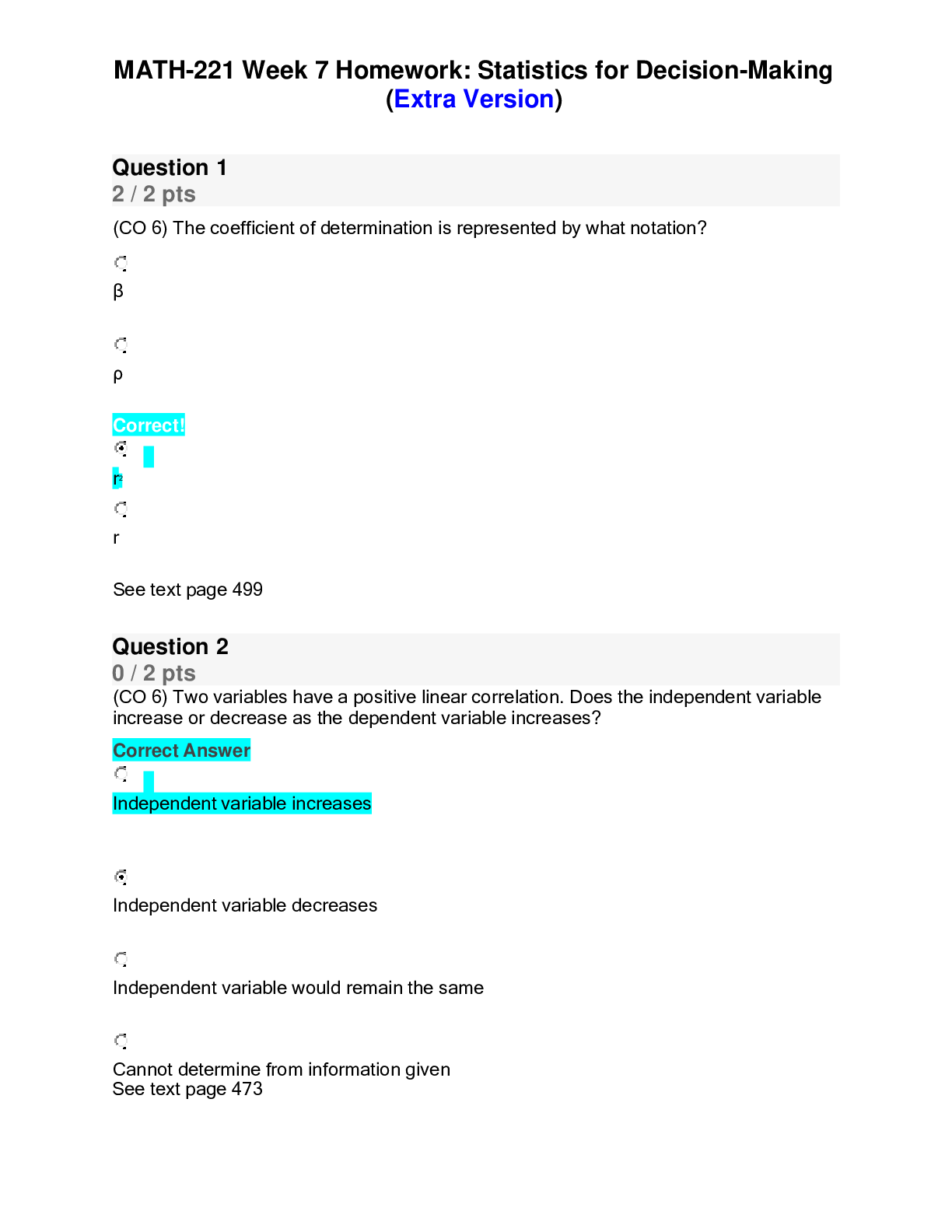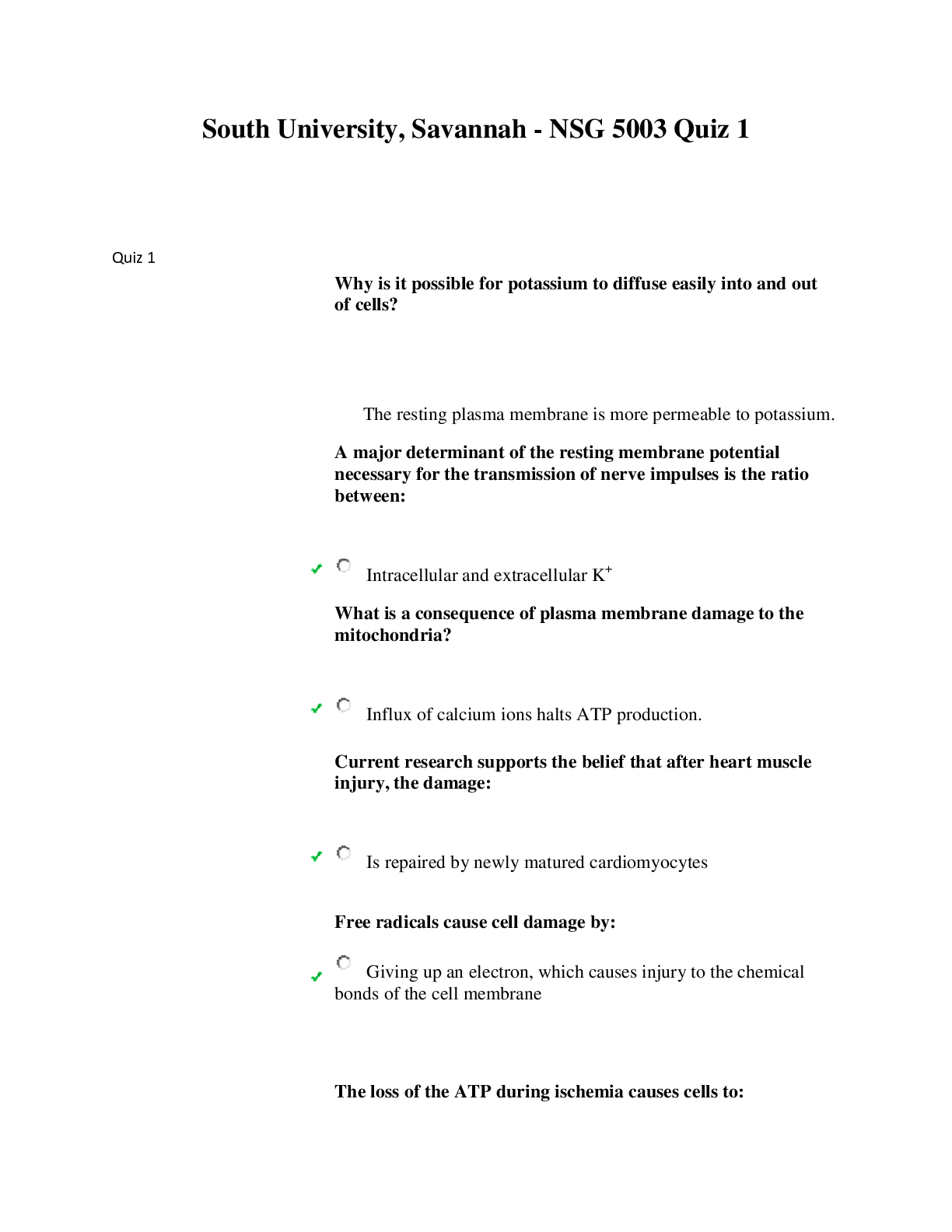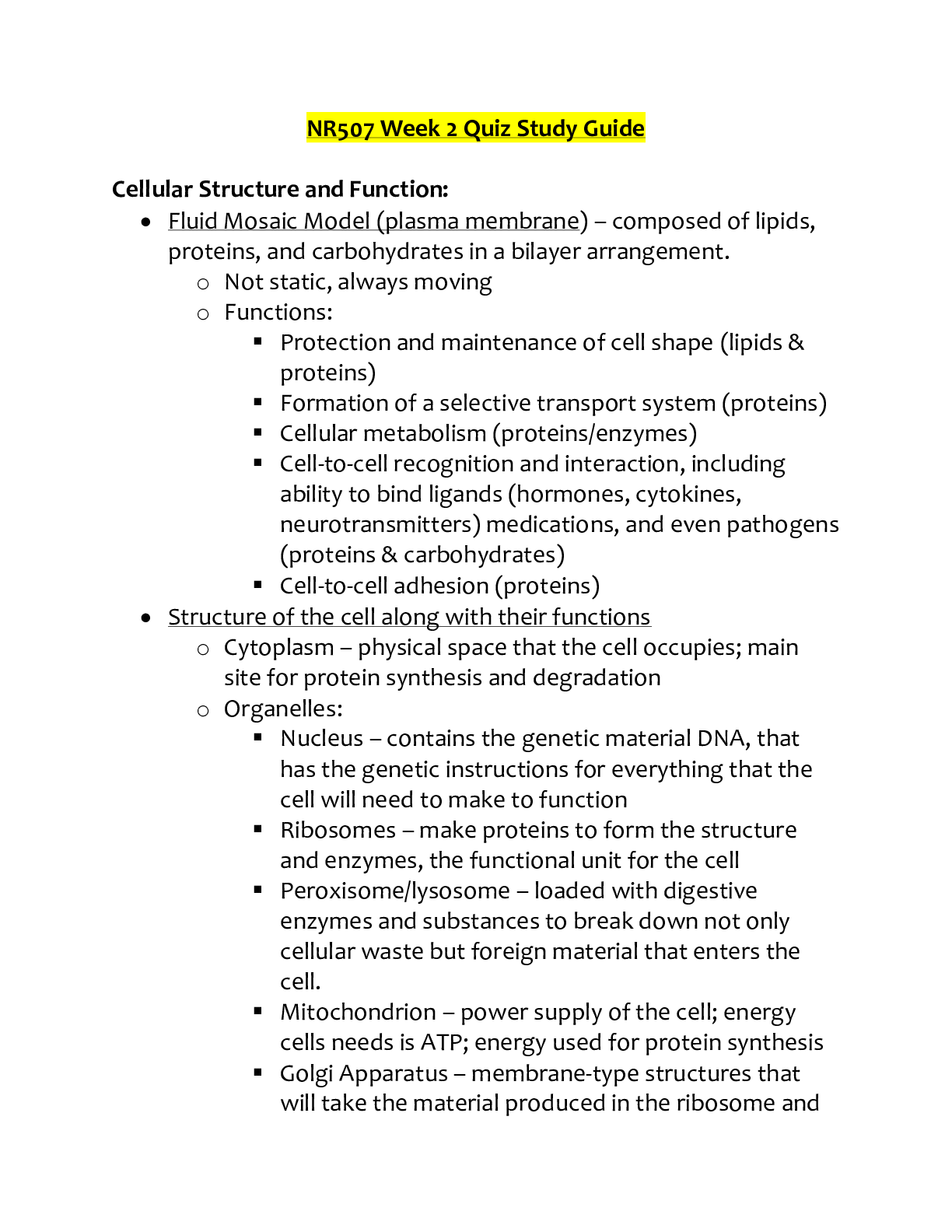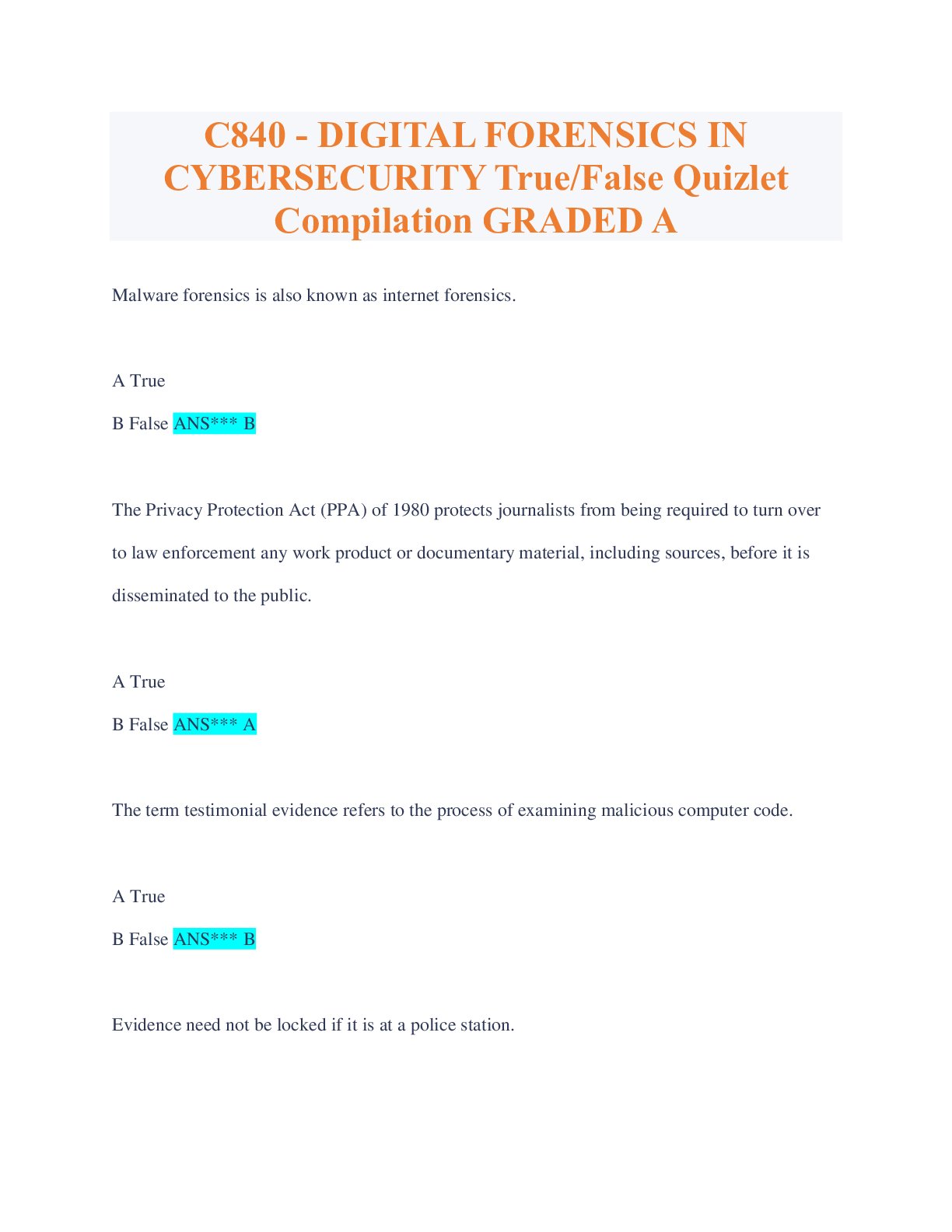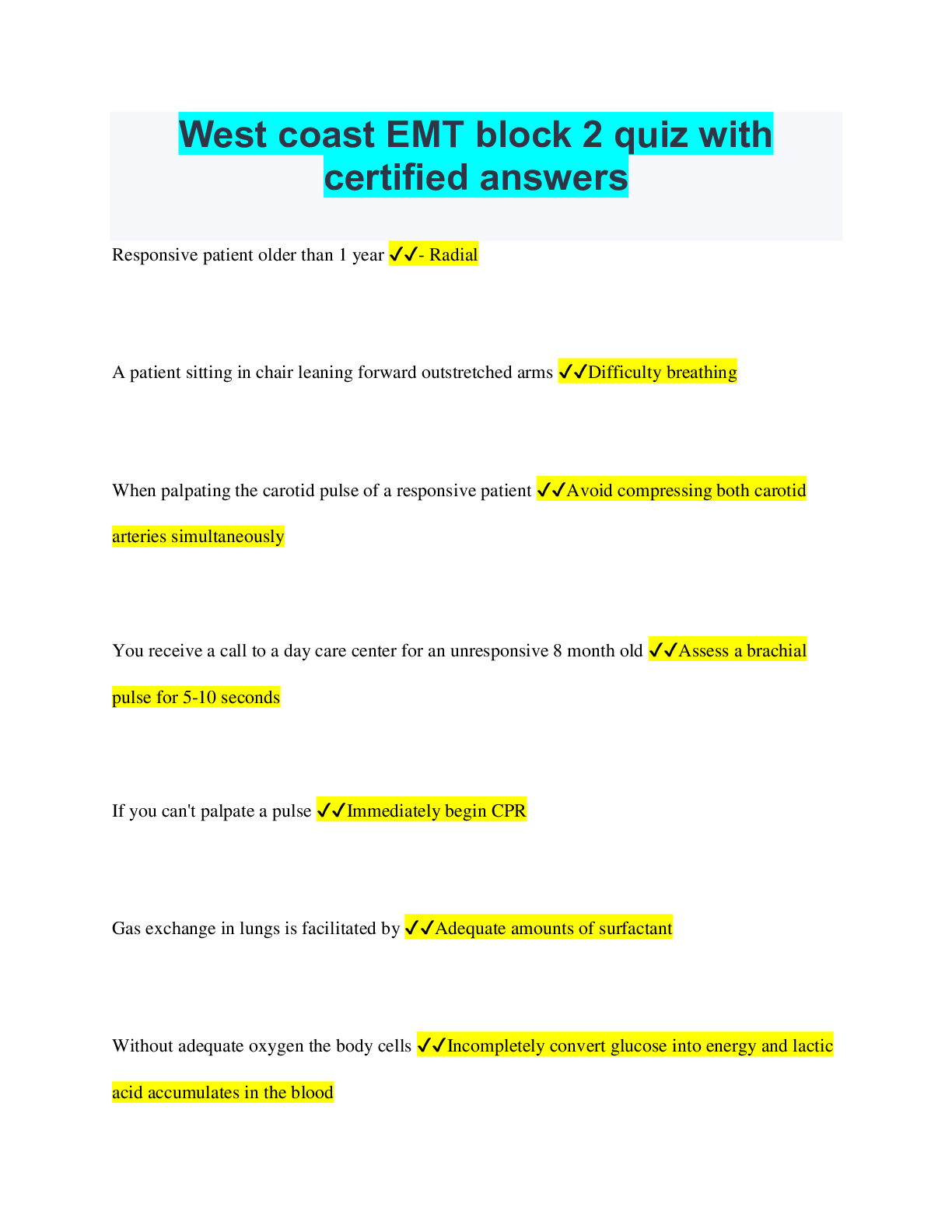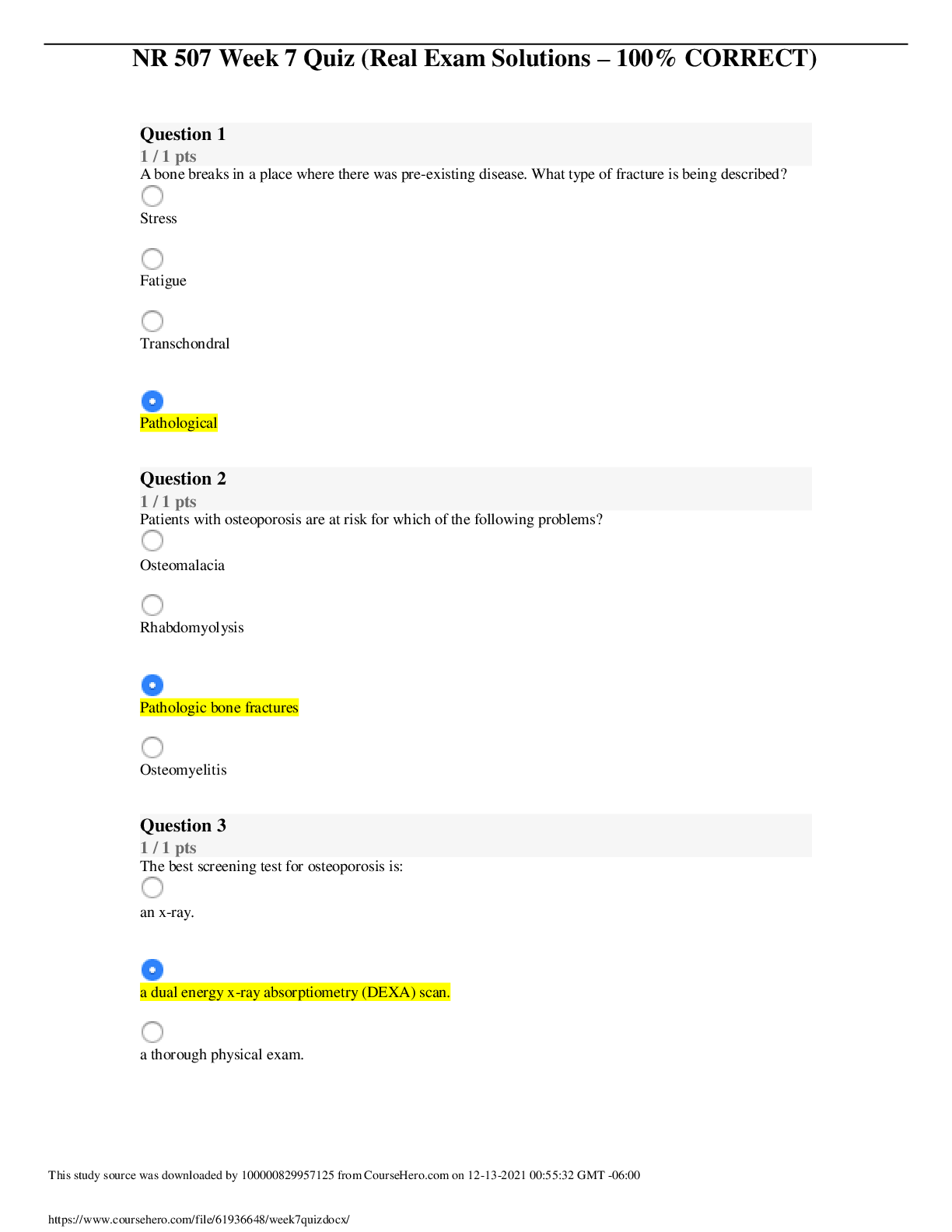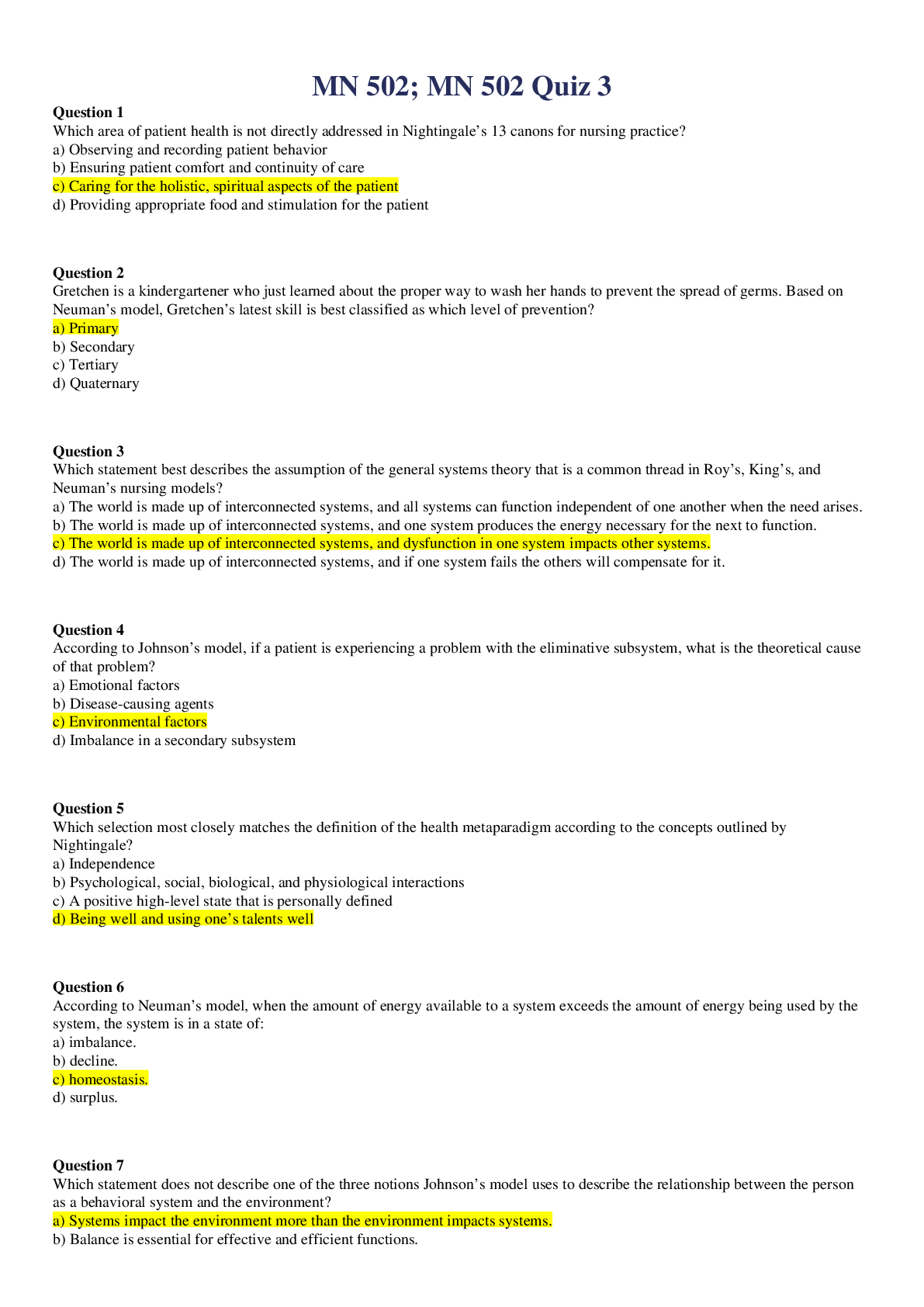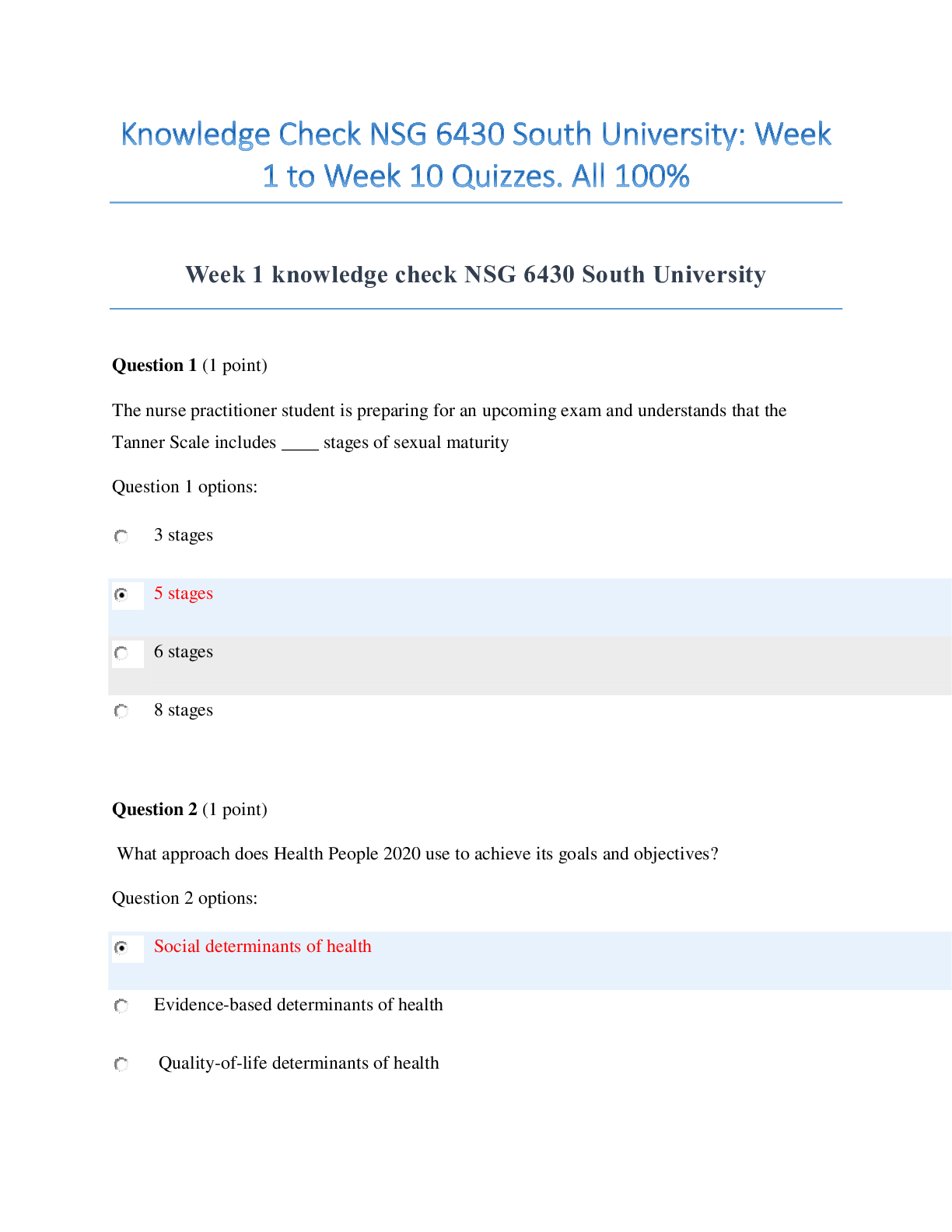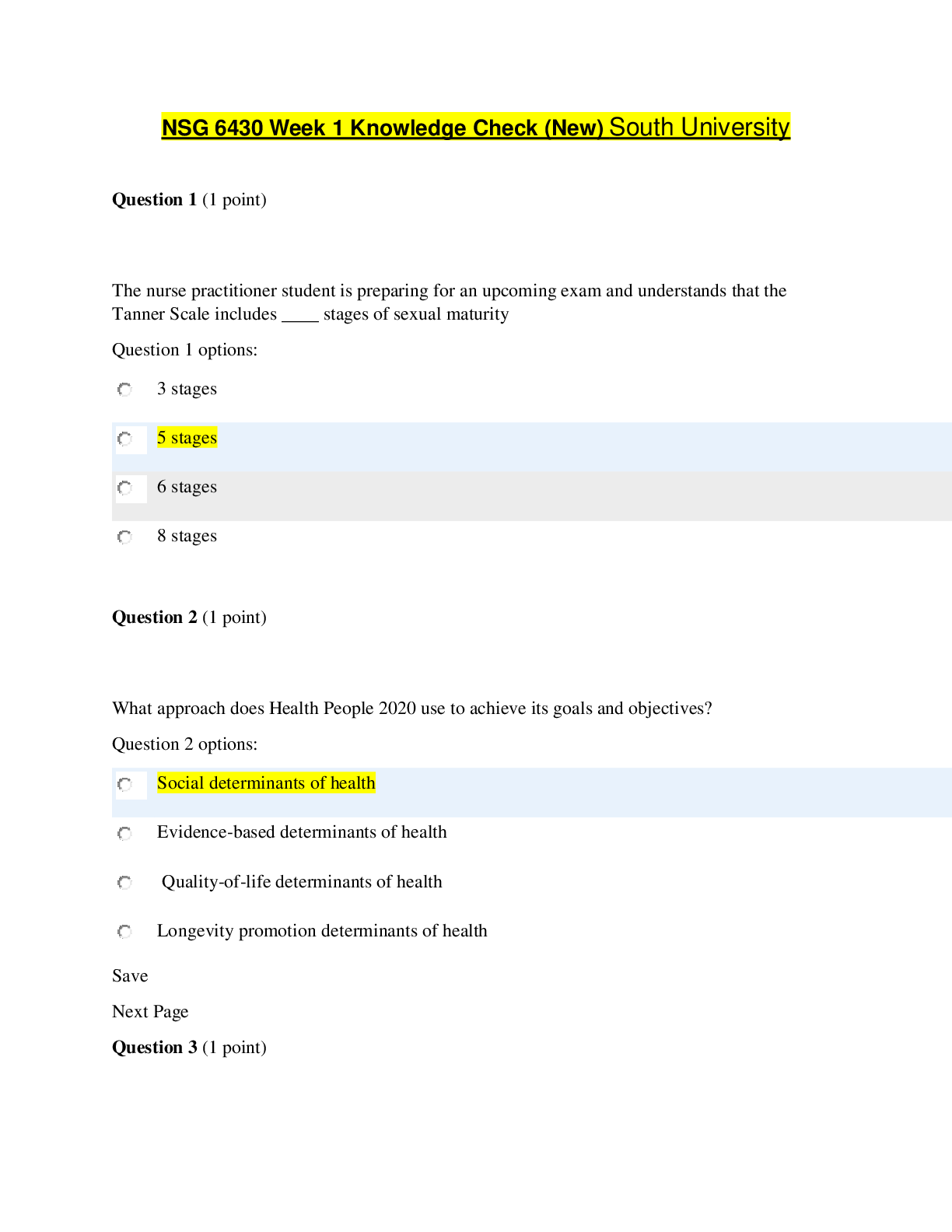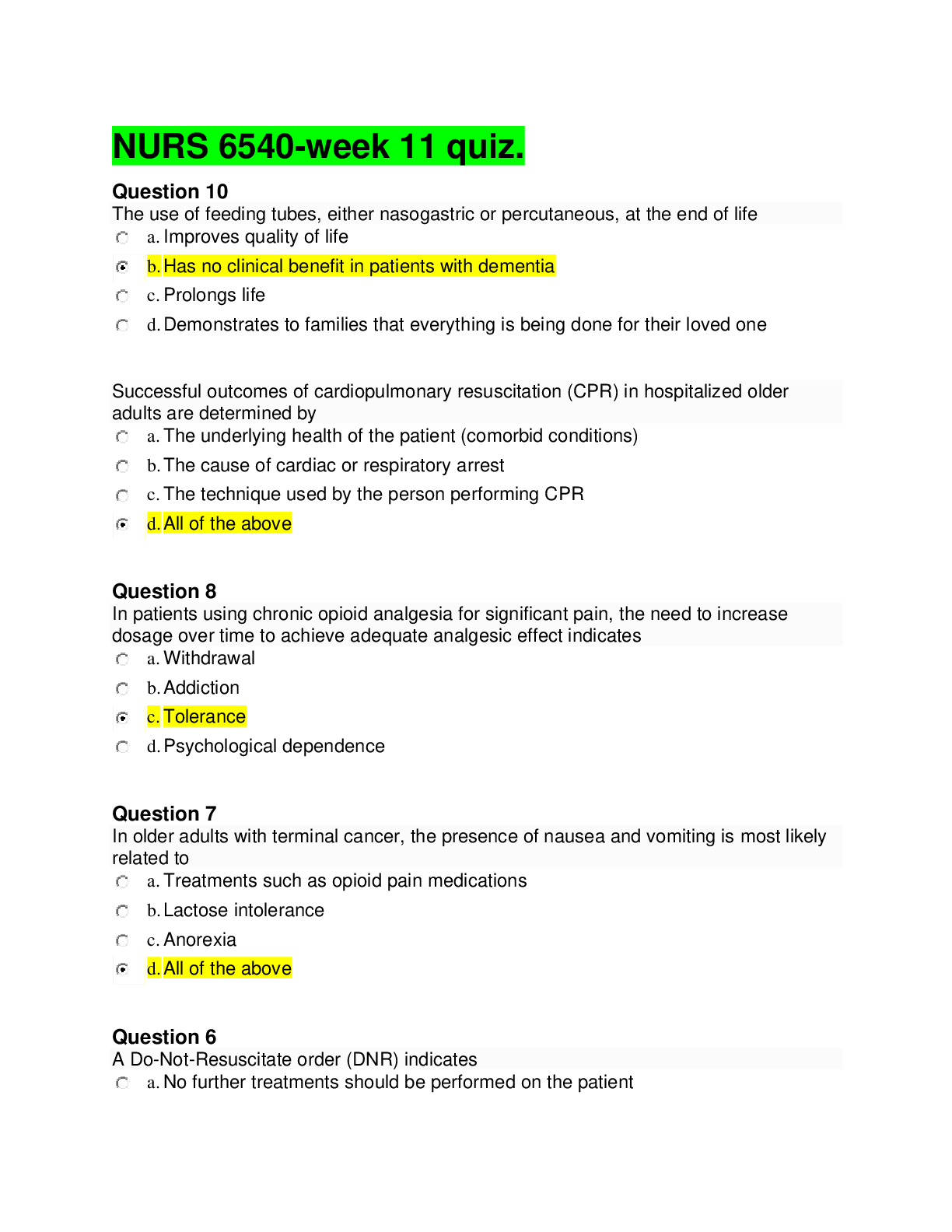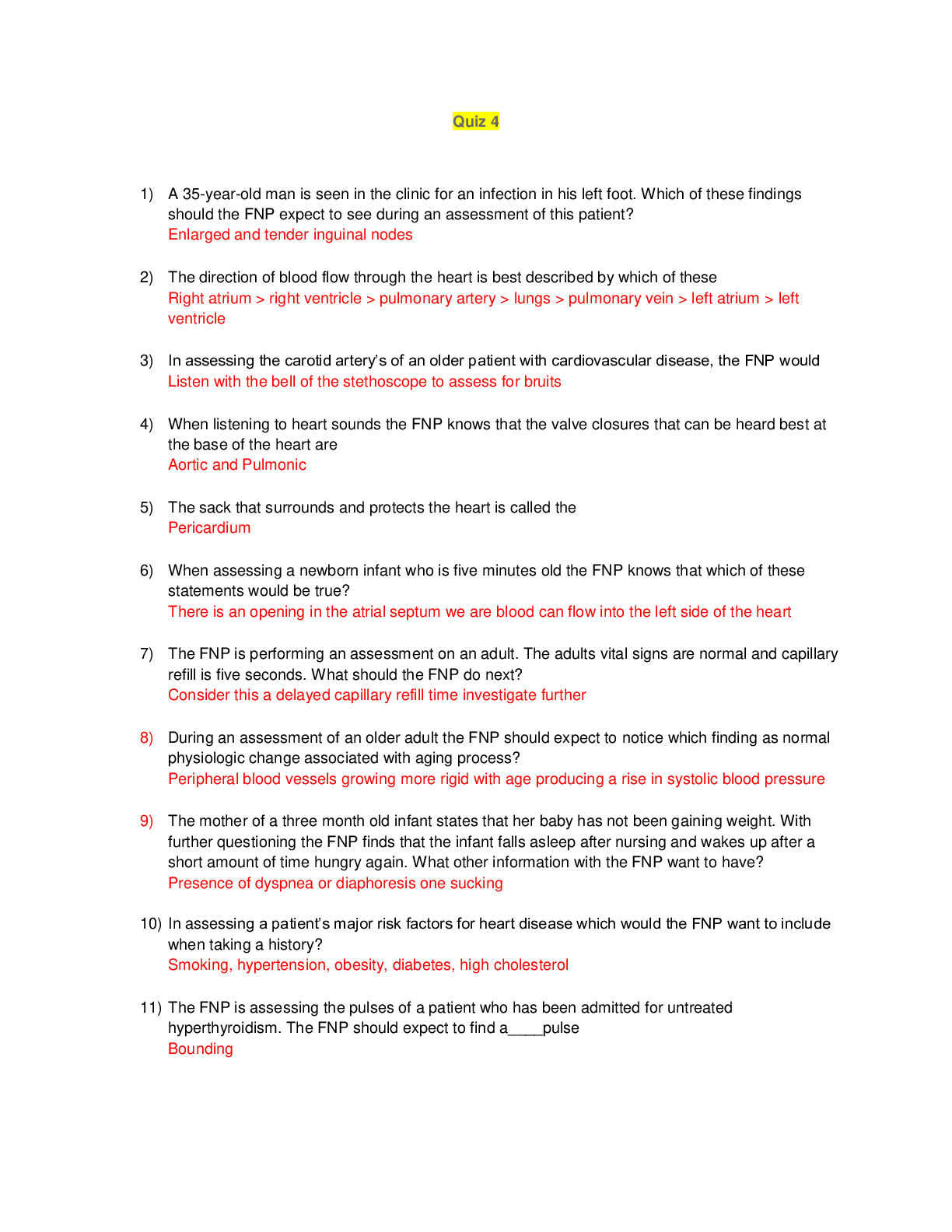NR 566 Quiz 1 – Advanced Pharmacology
Document Content and Description Below
NR 566 Quiz 1 – Advanced Pharmacology Question 1 1 / 1 pts A 68-year-old female has been just diagnosed with osteoporosis and has been prescribed alendronate (Fosamax). Which of the following s... hould the clinician include in the patient's education? "Take this medication right before going to bed". "Take this medication with food to reduce stomach irritation". "Take this medication with juice to help it absorb better". Correct! "Take this medication with plain water on an empty stomach". Question 2 1 / 1 pts The onset, peak and duration of isophane insulin (NPH) is which of the following? Onset=5-30 mins; Peak=0.5-3 hrs; Duration=3-4 hrs. Onset=1-2 hrs; Peak=none; Duration=20-24 hrs. Correct! Onset=1-2 hrs; Peak=4-10 hrs; Duration=10-16 hrs. Onset=30-60 mins; Peak=2-4 hrs; Duration=3-7 hrs. Question 3 1 / 1 pts Insulin lowers blood glucose by which of the following mechanisms? Inhibits fat storage and enhances mobilization of fat for energy. Decreases storage of glucose as glycogen in muscle and liver cells. Correct! Stimulates glucose entry into cells as energy source. Enhances glucose formation from non-carbohydrate sources, such as amino acids. Question 4 0 / 1 pts Which of the following statements regarding insulin is true? Detemir (Levimir) has more weight gain than isophane (NPH). Correct Answer Detemir (Levimir) has less nocturnal hypoglycemia than isophane (NPH). You Answered Glargine (Lantus) has more nocturnal hypoglycemia than isophane (NPH). Isophane (NPH) is more expensive than glargine (Lantus). Administration of basal insulin once or twice daily is preferred initially, either with IAI or LAI, to achieve desired normal glycemic patterns throughout the day and night. Glargine and detemir may have less nocturnal hypoglyemica than NPH; detemir may have slightly less weight gain. Both of the LAI are more expensive than NPH, which may be an important consideration (Inzucchi et al, 2012). Question 5 1 / 1 pts A 28-year-old female patient (BMI 28) presents to the clinic for her annual physical with no complaints. Which of the following subjective findings from the history should prompt the clinician to screen for diabetes? Caucasian descent. Gave birth 2 years ago to a baby weighing 8 pounds. Correct! History of acanthosis nigricans. Aerobic exercise for 20 minutes 3-4 days per week. Question 6 1 / 1 pts Secondary hypothyroidism is most commonly due to which of the following? Congenital defect. Autoimmune disease. Viral infection. Correct! Pituitary adenoma. Question 7 1 / 1 pts The clinician is providing medication instruction to a patient who was just prescribed ibandronate (Boniva). The patient takes many over the counter vitamin supplements. The clinician knows that many supplements can decrease the absorption of the medication and should not be taken at the same time. The patient should be instructed to take the ibandronate (Boniva) at least 60 minutes before ingestion of which of the following supplements? Tumeric. Vitamin C. Correct! Calcium. Red yeast rice. Question 8 0 / 1 pts A 40 year-old male patient was seen in the clinic yesterday with generalized complaints of fatigue. Blood work revealed a normal complete blood count (CBC) and thyroid stimulating hormone (TSH) with a random (non-fasting) glucose of 202 mg/dL. The clinician asks the patient to return to the office tomorrow to repeat testing. Which of the following test would confirm a diagnosis of diabetes? You Answered 2hr post-pyrandial glucose (following 75gm glucose load) = 198 mg/dL. Hb A1c = 5.7%. Random (non-fasting) glucose = 191 mg/dL. Correct Answer Fasting glucose = 128 mg/dL. The diagnostic criteria for diabetes mellitus and pre-diabetes are shown in Table 33-2. There are four tests used for diagnosis, and the tests should be confirmed on a subsequent day, unless there are overt clinical symptoms. It is preferable to confirm with the same test or one that is considered more predictive; fasting plasma glucose (FPG) levels are the most reliable. If a repeated test is below the diagnostic criteria, the test should be repeated in 3 to 6 months (ADA, 2015). Question 9 1 / 1 pts Which of the following is a rare adverse effect associated with long-term use of bisphosphonate therapy? Thrombocytopenia. Correct! Osteonecrosis of the jaw. Tendon rupture. Ulcerative colitis. Question 10 1 / 1 pts Education regarding the proper administration of pancrelipase would include which of the following? "Pancrelipase should be held in the mouth for 30 seconds prior to swallowing to help facilitate absorption." T"ake pancrelipase prior to every meal and snack." Correct! "Take pancrelipase prior to every meal and snack that contains a fatty component." "Take pancrelipase with a calcium or magnesium containing antacid to avoid stomach upset." Quiz Score: 8 out of 10 [Show More]
Last updated: 1 year ago
Preview 1 out of 4 pages
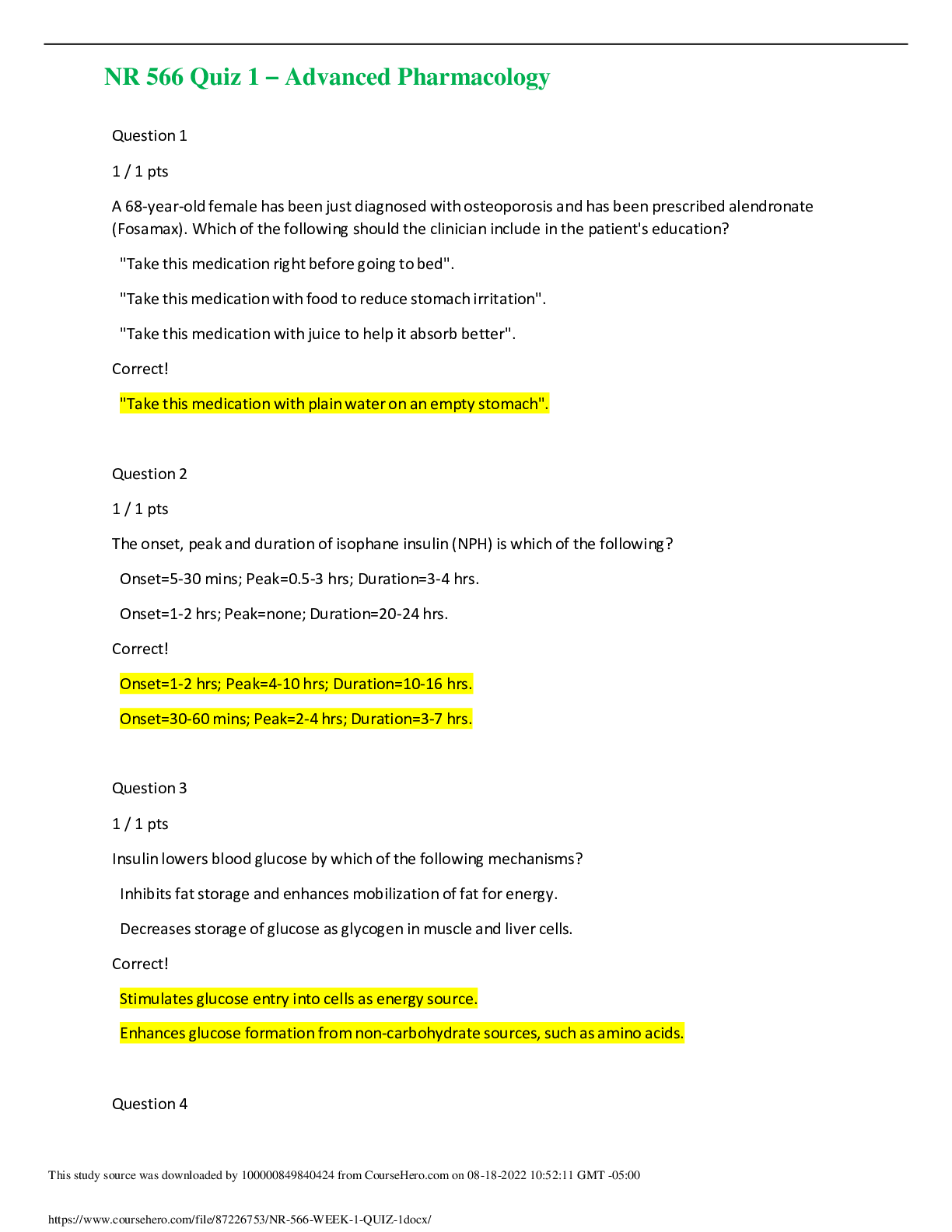
Reviews( 0 )
Document information
Connected school, study & course
About the document
Uploaded On
Aug 18, 2022
Number of pages
4
Written in
Additional information
This document has been written for:
Uploaded
Aug 18, 2022
Downloads
0
Views
30

